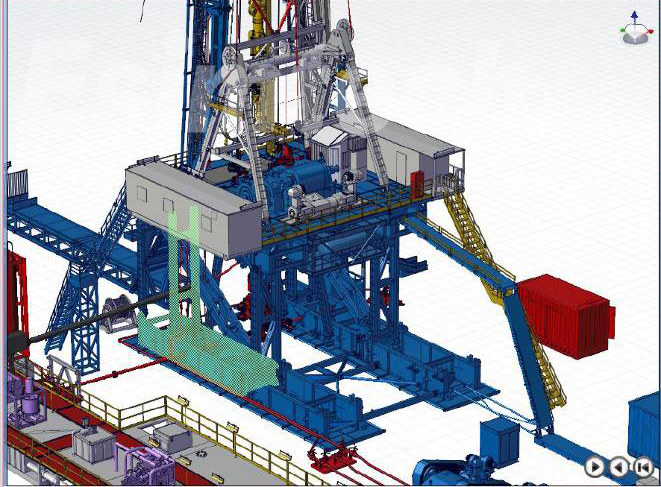A Day in the Life: Training Tomorrow's Drillers Through Virtual Reality
The morning sun casts long shadows across the training facility as Sarah Chen adjusts her hard hat and steps into what looks like a cross between a mission control center and a high-tech gaming arcade. Twenty-four years old and fresh from university, she's about to experience something her grandfather, a lifelong roughneck, would have thought impossible: learning to run a drilling rig without setting foot on one.
"Ready to drill your first well?" asks her instructor, Mike, a veteran driller with thirty years of field experience who's now helping to train the next generation. Sarah nods, settling into the driller's chair. Before her stretches an array of monitors, controls, and displays that would be right at home on any modern drilling rig. But this isn't a rig – it's a state-of-the-art simulator that will be her workplace for the next eight weeks.
The session begins with what Mike calls "coffee shop drilling" – routine operations under normal conditions. Sarah watches the 3D visualization on the massive LED screen as the virtual drill bit penetrates the digital earth. Weight on bit, rotary speed, mud flow rate – all the parameters she learned about in textbooks now dance across her displays in real-time. Her hands move confidently over the controls, adjusting parameters based on the geological data streaming across her screens.
"You're getting the hang of this," Mike observes. "Now let's see how you handle some complications."
With a few keystrokes, he introduces a stuck pipe scenario. The steady progress of the drill string halts, and alarms begin to sound. Sarah's heart rate increases as she recognizes the signs – increased torque, reduced rate of penetration, erratic standpipe pressure. This is where textbook knowledge meets real-world application, and the beauty of simulation training becomes apparent.
In a real drilling operation, a stuck pipe incident can cost hundreds of thousands of dollars and put lives at risk. Here, it's a learning opportunity. Sarah methodically works through the diagnostic procedures, adjusting mud properties, varying rotary speed, and carefully monitoring the response. When her first attempt doesn't free the pipe, she pauses, reviews the data, and tries a different approach.
This trial-and-error process, impossible to replicate safely on an actual rig, is what makes these Oil Rig Simulators so valuable. Trainees can experience the pressure of critical situations without the associated risks, building confidence and competence in equal measure.
As the morning progresses, Sarah faces increasingly complex scenarios. A sudden kick threatens to escalate into a blowout. She must quickly recognize the signs – increased return flow, rising pit volume, decreasing drill pipe pressure – and implement the correct well control procedures. The simulator responds realistically to her actions, showing the consequences of both correct and incorrect decisions.
During a break, Sarah reflects on her training. "In university, we learned all the theory, but it's completely different when you're sitting here with all this information coming at you and alarms going off. The simulator lets you experience that pressure in a safe environment."
The afternoon session focuses on teamwork. Sarah is joined by two other trainees, and together they must coordinate a complex casing operation. Communication becomes critical as they work through the procedure, each person responsible for different aspects of the operation. The simulator tracks their coordination, highlighting moments when better communication could have improved efficiency.
Mike explains the importance of this collaborative training: "On a real rig, you're part of a team. No one works in isolation. These simulators let us train not just individual skills but also teamwork and communication under pressure."
As the day winds down, Sarah reviews her performance metrics. The simulator has tracked every decision, every response time, every parameter adjustment. Detailed analytics show her strengths and areas for improvement, creating a personalized training plan for the weeks ahead.
This data-driven approach to training is revolutionizing how the industry prepares its workforce. Instead of relying solely on subjective assessments, instructors can now provide objective feedback based on comprehensive performance data. Trainees can see exactly where they excel and where they need to focus their efforts.
The facility where Sarah trains is part of a growing network of simulation centers worldwide. As the industry faces a shortage of experienced personnel, these centers play a crucial role in accelerating the development of new talent. They also serve experienced workers looking to upgrade their skills or transition to new roles.
Looking ahead, the technology continues to evolve. Virtual reality headsets are beginning to supplement the large screen displays, providing even more immersive experiences. Artificial intelligence systems can now generate infinite variations of scenarios, ensuring that no two training sessions are exactly alike. Some facilities are experimenting with biometric monitoring, tracking stress responses and decision-making patterns to optimize training effectiveness.
For Sarah, the simulator represents more than just a training tool – it's her pathway to a challenging and rewarding career. In six weeks, she'll transition to on-the-job training on an actual rig, but the foundation built in the simulator will give her the confidence and competence to contribute from day one.
As she leaves the training facility, Sarah thinks about her grandfather and wonders what he would make of all this technology. She suspects he would be amazed but also proud that the industry he helped build continues to innovate and improve. The fundamentals of drilling haven't changed, but the way we prepare people to do this vital work has been transformed.
Tomorrow, she'll be back in the simulator, facing new challenges and building the skills that will power the world's energy future. It's a far cry from the rough-and-tumble world her grandfather knew, but in many ways, it's still the same business: hard work, careful attention to detail, and the satisfaction of a job well done.